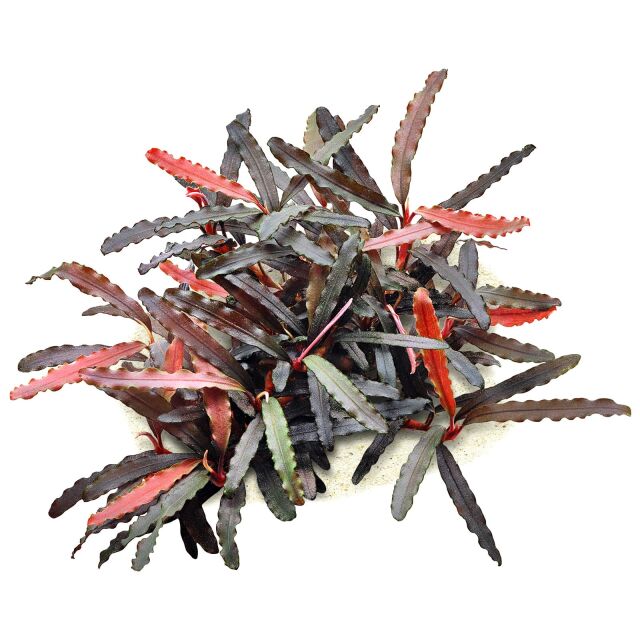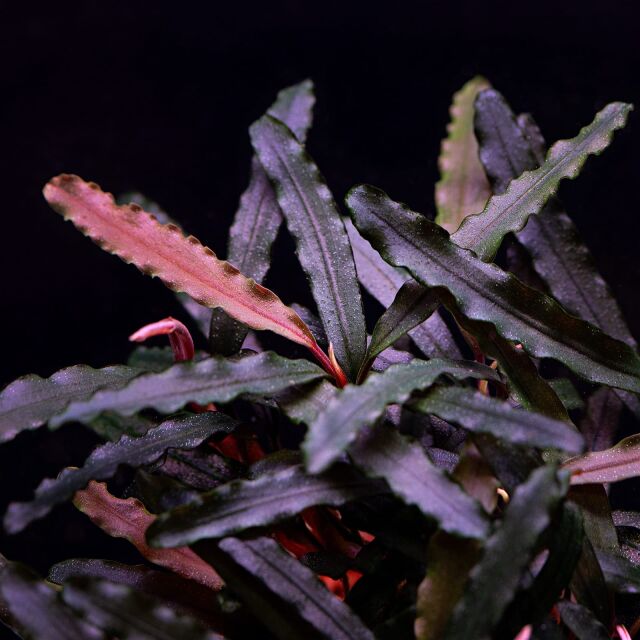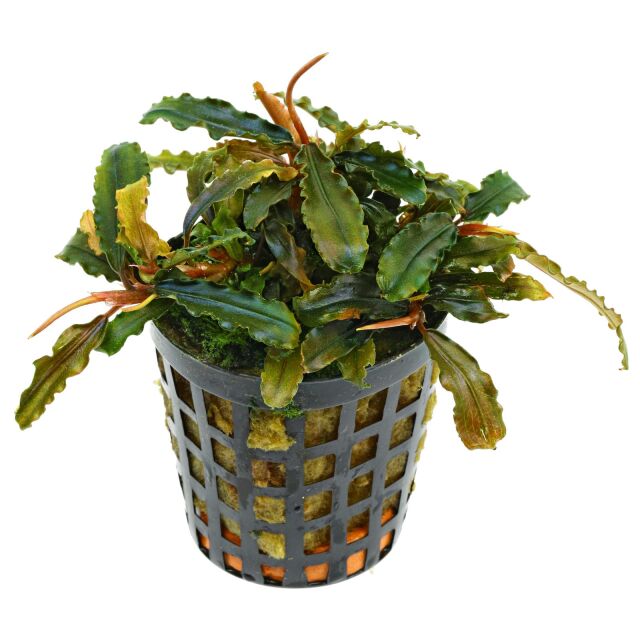



Bucephalandra sp. "Catarina"
- Narrow leaves with strongly undulate margins
- Coppery red hues
- Creeping habit
Sign in or Register
Item question
We’re here for you!
Please enter your question and e-mail and we’ll contact you as soon as possible. It usually takes us up to 24 hours during business days to respond.
Thank you for your question!
Thank you, we’ll get in touch!
Close window
You already sent us a question.
Please wait a few minutes
Description
This narrow-leaved, small, very decorative Bucephalandra is produced in nurseries and in vitro laboratories in Europe. The trade name "Catarina" seems to refer to the species name Bucephalandra catherineae, but it is uncertain whether the plant belongs to this species. All Bucephalandras originate from the island of Borneo and are found there as current-adapted plants (rheophytes) on rocks in the flood zone of streams. Bucephalandra sp. "Catarina" forms horizontal, at least 5 cm long, 2 mm thick rhizomes with an ascending tip. Many side shoots appear especially on the older parts of the rhizome. The spreading, elongated to linear leaves grow to about 5 cm long and 0.7 cm wide and have a curly margin. In the submerged form the leaves show very dark olive-green to brown-red tones. The sprouting leaves are light brown-orange. Over time, the plant forms a many-headed group with its side shoots that grows 5 cm high and at least 18 cm wide.

Bucephalandra species and forms are primarily epiphytes on rock or wood where they attach themselves by their roots. They can also be fixed to the bottom, however the rhizome must not be buried to avoid rotting. The plant will root on its own and benefit from the nutrients in the substrate. The growth is generally slow to very slow.
Bucephalandras cope with poor light conditions, however they develop their most beautiful look with medium lighting, good water current and constant nutrient and CO2 supply. They also tolerate strong lighting, sufficient CO2 and nutrient supply provided. The favourable temperature range is about 20 to 27°C.
We recommend to put Bucephalandras into already cycled aquariums. It is best to leave the plants in peace so they can grow. Sudden changes of parameters may lead to shedding of leaves, normally, however, the plants regrow slowly and produce new shoots on the rhizome. Bucephalandras are easily propagated by cutting terminal and side shoots that also promotes the ramification of the plant.
Bucephalandra sp. "Catarina" attracts attention on the hardscape in the middle to foreground of an aquarium with its graceful, beautifully coloured foliage.
General information
| Item no. |
|
| EAN | |
| Weight | 0,10 kg |
| Shipping weight | 0,10 kg |
Customers ask customers
You have questions about this product? Ask other customer or our support team about this product!
Customer reviews
2 Reviews
| 5 Stars(2) |
|
| 4 Stars(0) |
|
| 3 Stars(0) |
|
| 2 Stars(0) |
|
| 1 Star(0) |
|

Received a slightly bruised stock with a number of broken leaves and had some melt but has adapted well and is showing new healthy growth.

perfect plant and condition! order arived on time. exactly as seen on the pistures found on the website. i m very satisfied